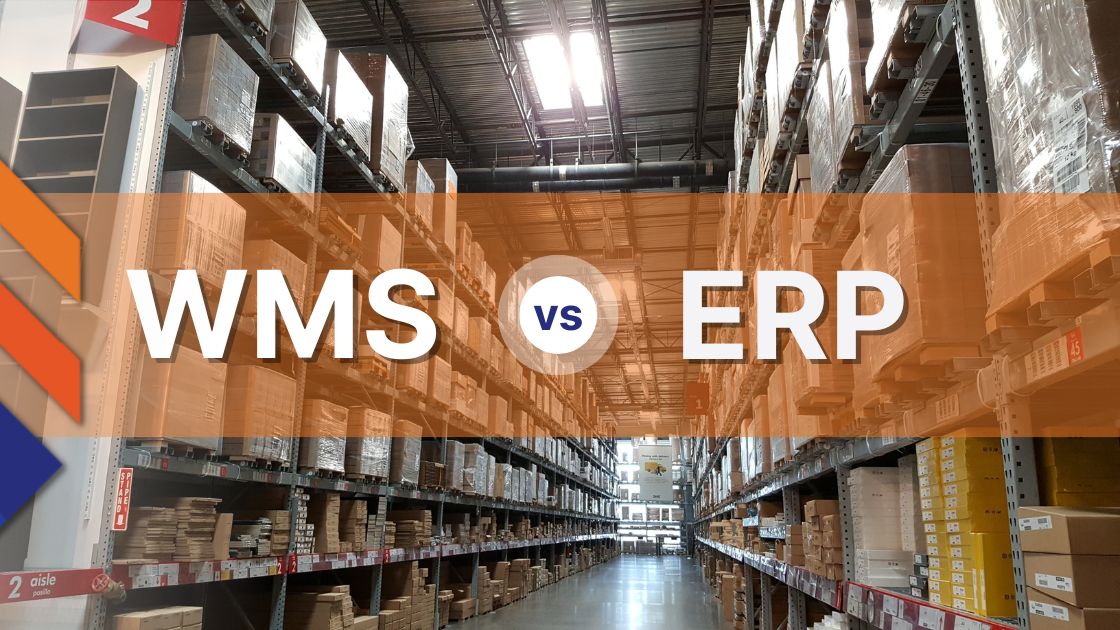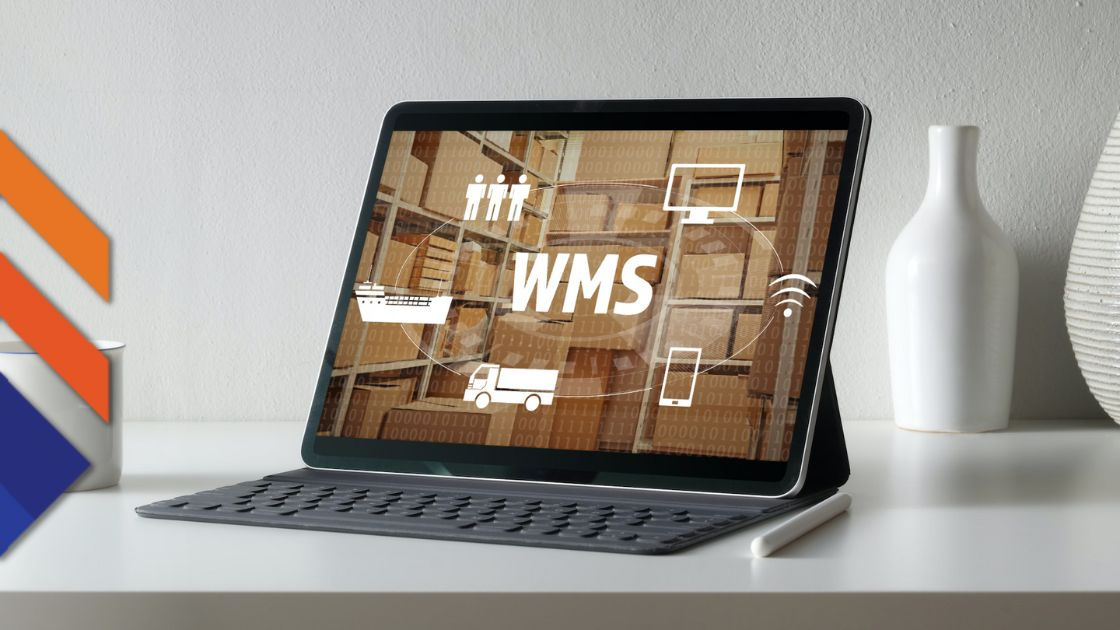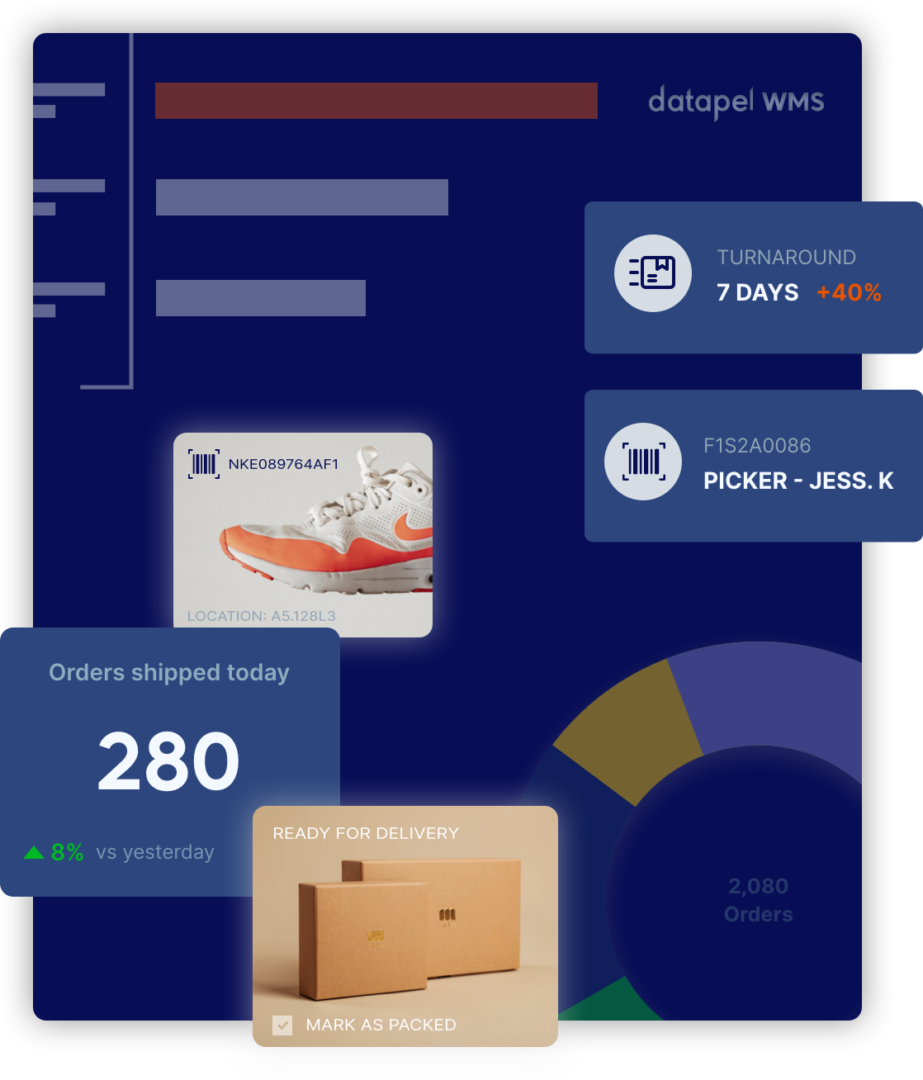WMS vs ERP System: Which one is the right fit?
Contents
Navigating the intricacies of warehouse operations is no small feat. It demands not just a resilient mindset but also a sophisticated, comprehensive software solution to back it up. While instilling determination and resilience is a journey of personal and professional development, where we excel is in providing you with the technological insights and guidance necessary for choosing the right software solution for your warehouse operations.
This article embarks on a detailed exploration of two pivotal software systems in the realm of business operations and logistics: Enterprise Resource Planning software (ERP) systems and Warehouse Management Systems (WMS).
Each system offers unique features, functionalities, and benefits tailored to different aspects of business management and operational efficiency. Understanding the distinct capabilities and advantages of ERP and WMS is crucial for any business aiming to streamline its operations, enhance productivity, and achieve a competitive edge in today’s fast-paced market.
ERP systems are renowned for their ability to integrate various functions across an organisation into a unified, coherent system. From finance and HR to sales and supply chain management, ERP systems provide a bird’s-eye view of a company’s operations, facilitating improved decision-making, efficiency, and scalability.
On the other hand, WMS software offers a laser-focused approach to managing the nuances of warehouse operations, including inventory management, order fulfilment, and shipping and receiving. The decision to implement one system over the other, or perhaps a combination of both, hinges on a myriad of factors including the specific needs of your business, the complexity of your operations, and your long-term strategic goals.
In the following sections, we will dissect the core differences between ERP and WMS software, examine the benefits and potential drawbacks of each, and provide guidance on how to assess your business needs to make the most informed decision possible.
Whether you are a small business looking to optimise your warehouse operations or a multinational corporation seeking to enhance efficiency across multiple departments, understanding the role and impact of ERP and WMS systems in achieving these objectives is a critical step.
Join us as we delve deeper into the world of hybrid ERP and WMS, shedding light on the pivotal question: Which one is the right fit for your business?
Our goal is to equip you with the knowledge and insights needed to navigate this complex decision-making process, ensuring that you choose a solution that not only meets your current needs but also supports your business’s growth and evolution in the years to come.
Exploring the World of Warehouse Management Systems (WMS)
In the relentless pace of today’s market, businesses are under constant pressure to not only meet but exceed customer expectations. This necessitates a level of efficiency and agility that can only be achieved through the optimisation of warehouse operations.
Enter the Warehouse Management System (WMS), a sophisticated software solution engineered to refine and enhance the management of warehouse tasks. These tasks range from inventory management, order fulfilment, to the intricacies of shipping and receiving—each a critical component in the seamless operation of a business’s logistics.
Key Benefits of Implementing a WMS:
- Unmatched Real-Time Visibility: One of the cornerstone features of a WMS is its ability to provide warehouse managers with real-time insights into inventory levels, order processing statuses, and precise location tracking of goods within the warehouse. This level of visibility is paramount, enabling the efficient management of resources, quick adaptation to demand fluctuations, and the fulfilment of customer orders with unprecedented speed and accuracy.
- Automation of Key Processes: The automation capabilities of a WMS extend to vital warehouse operations such as cycle counting, inventory replenishment, and even picking and packing processes. By reducing the reliance on manual labour, WMS not only minimises the risk of human error but also enhances operational efficiency, allowing staff to focus on more strategic tasks that require human oversight.
- Seamless Integration Capabilities: A well-implemented WMS doesn’t stand alone but integrates seamlessly with other critical business systems such as Enterprise Resource Planning (ERP) and Transportation Management Systems (TMS). This integration is vital in creating a cohesive workflow, ensuring data consistency across different departments, and eliminating the risk of information silos that can hinder business operations.
- Boost in Warehouse Efficiency and Cost Savings: By streamlining operations, a WMS contributes to significant improvements in warehouse efficiency. This, in turn, leads to reduced operational costs—such as lower labour costs, decreased waste, and optimised use of warehouse space. Moreover, the increased accuracy and speed in fulfilling orders enhance customer satisfaction, which is essential for maintaining a competitive edge in today’s market.
A practical example of the transformative impact of a WMS is the case of EHI Australia. By integrating a WMS into their operations, they were able to significantly reduce penalties related to order inaccuracies and delays, to less than 10% of their previous costs. This not only resulted in substantial savings but also freed up resources that could be redirected towards further operational improvements and investments.
The Case Study of EHI Australia:
EHI Australia’s journey with a WMS exemplifies the tangible benefits that can be achieved. Prior to the implementation, they faced challenges in managing paperwork, tracking inventory accurately, and meeting tight delivery schedules. With the adoption of a WMS, they streamlined their operations to such an extent that they saved $200 per day on paperwork alone, showcasing the cost-efficiency and operational improvements a WMS can bring to a business.
Understanding the Essentials of Enterprise Resource Planning (ERP)
In the complex tapestry of modern business operations, the need for a cohesive, integrated approach to managing diverse functions is paramount. This is where Enterprise Resource Planning (ERP) systems come into play, as defined by industry analyst Gartner.
An ERP system is not merely a software solution but a strategic foundation for core business processes that integrates a suite of business applications into a single, coherent system. This integration covers the gamut of end-to-end business processes, from finance and human resources (HR) to distribution, manufacturing, services, and supply chain management.
ERP Definition in Detail
How do people understand Enterprise Resource Planning? In simplest terms, Enterprise Resource Planning can be defined as any business process necessary for a company to run: financial management, human resource management, production, supply management, service delivery, procurement, and others. At the simplest levels, Enterprise Resource Planning provides efficient management of this entire business process in one integrated system. Usually, the organisation uses the document as its records system. Despite these shortcomings, today’s ERP software has very little similarity to the ERP system in its day-to-day use.
Core Advantages of Implementing an ERP System:
- Holistic Organisational Insight: At the heart of an Enterprise Resource Planning system’s value proposition is its ability to provide a unified view of the organisation’s data and operational processes. This holistic perspective is crucial for informed decision-making, as it allows leaders and managers to access and analyse information from across the organisation in real time data, fostering a culture of agility and responsiveness.
- Streamlined Process Automation: ERP systems excel in automating a wide array of manual processes—ranging from routine data entry tasks to complex reporting mechanisms. This automation extends beyond mere efficiency; it transforms the way businesses operate, providing real-time visibility into core business activities and significantly reducing the potential for human error.
- Tailored Customisability and Scalability: Recognising that no two businesses are alike, ERP systems are designed with flexibility in mind. They can be customised to align with an organisation’s specific operational needs and are scalable to accommodate growth. This adaptability ensures that businesses can evolve their ERP systems in tandem with their strategic direction and scaling requirements.
- Warehouse Functionality: While ERP systems are known for their broad applicability across various business functions, they also offer capabilities to manage typical warehouse operations. Business functions such as receiving, picking, packing, shipping, and bin/location management can be handled within an ERP framework, albeit with a different focus and level of sophistication compared to dedicated Warehouse Management Systems (WMS). This makes ERP systems a viable option for businesses looking for an integrated approach to both corporate and warehouse management.
Despite the breadth of functionality offered by ERP systems, it’s important to recognise their distinct focus. ERP systems aim to integrate and streamline the wide-ranging aspects of a business’s operations, providing a macro-level view and control mechanism. This contrasts with the micro-level, specialised focus of a best-of-breed WMS, which is designed to address the specific, nuanced needs of warehouse operations.
Balancing ERP with Warehouse Needs:
While ERP systems provide a comprehensive suite of tools for managing business operations, organisations with complex warehousing and logistics requirements might still benefit from the specialised functionalities offered by a WMS. The decision between implementing an ERP system, a WMS, or a combination of both depends on the unique needs, scale, and strategic goals of the business.
Delineating the Distinctions: ERP Systems vs Warehouse Management Systems
In the digital age, businesses seek to leverage technology to streamline operations, enhance efficiency, and bolster customer satisfaction. At the heart of this technological revolution lie two pivotal systems: the ERP software system and WMS. Though both are instrumental in refining business processes, they serve different purposes and cater to varying aspects of organisational needs.
ERP Systems: The Integrative Backbone
ERP systems stand as the integrative backbone of a company, melding various business units, processes and functions into a unified, comprehensive system. These systems span the entire spectrum of an organisation’s operations, including finance, human resources, supply chain management, and manufacturing, among others.
The essence of an ERP system is its holistic approach; it provides a macro-level oversight, facilitating a seamless flow of information across departments. This integrative capability enables businesses to make informed decisions, streamline operations, and realise efficiencies at a strategic level.
Types of ERP Deployment Models
Different ERP deployment models cover the needs of different organisations and it is important to know the individual characteristics of each to be able to determine the right solution. There are nuances in this case as compared to cloud vs. on-premises. On-premises ERP: The business operates software from its servers and provides security support, maintenance, updates and other fixes for all its products and services. Upkeep often calls for an IT support staff. Throughout history, the company has been a trusted resource.
WMS: Specialised Focus on Warehouse Operations
Conversely, WMS software adopts a micro-level focus, honing in on the specific intricacies of warehouse and order management and fulfilment operations. A WMS is designed to optimise the storage, movement, and tracking of goods within a warehouse, from the moment items enter the facility until they are dispatched.
Key functionalities include inventory management manufacturing resource planning, picking and packing processes, and shipping coordination. The specialised nature of WMS allows for detailed operational control and optimisation within the warehouse, directly impacting efficiency, accuracy, and customer satisfaction in the fulfilment process.
ERP vs WMS: A Comparative Illustration
Consider a manufacturing enterprise as an illustrative example. Such a business might deploy ERP systems to oversee and integrate its end-to-end business processes—from financial accounting and customer relationship management to supply chain operations, product lifecycle management and beyond. Simultaneously, the same enterprise might utilise a WMS to specifically manage the logistical complexities of its warehouse operations, ensuring that inventory is managed efficiently, orders are fulfilled accurately, and shipments are dispatched timely.
Synergistic Potential for Enhanced Business Performance
The interplay between ERP software and a WMS is not one of competition but of complementarity. While ERP provides the broad, integrative oversight needed for cohesive business operations, WMS offers the depth of functionality required for the specialised management of warehouse activities. Together, they empower businesses to achieve their ultimate objectives: heightened efficiency, cost reduction, and elevated customer satisfaction.
Businesses of varying sizes and across diverse industries can harness the collective power of both ERP solutions and WMS. With solutions tailored to industry-specific needs and the ability to customise functionalities, organisations can craft a technology ecosystem that best supports their unique operational requirements and strategic goals.
Choosing Between WMS and ERP Software: A Guided Approach
Deciding on the right software solution—whether it’s ERP systems or a cloud based, WMS—entails a thorough analysis of your business’s operational requirements, strategic goals, and the specific challenges you aim to address. Here’s a detailed breakdown of the key considerations to guide your decision:
1. Clarify Your Business Objectives:
Your journey begins with a clear articulation of your business goals. If your priority is to achieve detailed oversight and efficiency within your warehouse operations, including real time data for tracking inventory, streamlined order management, project management and optimised storage strategies, a WMS is likely your best bet. Its specialised functionality is designed to tackle the complexities of warehouse management head-on.
Conversely, if you aim to integrate and streamline a broad spectrum of business processes—from financial management and human resources to supply chain operations and customer relationship management—an ERP system could offer the comprehensive solution you need. An ERP’s strength lies in its ability to unify disparate aspects of your business, providing a holistic view and facilitating more strategic decision-making.
2. Evaluate Your Current Operational Landscape:
A thorough assessment of your existing processes and systems is crucial. This evaluation will help you understand whether your needs are best served by a standalone WMS, accounting software that offers deep, focused functionality for managing warehouse operations, or by an ERP system that provides a more generalised suite of tools for managing various aspects of your business. If your current ERP system falls short in addressing the specific demands of your warehouse operations, integrating a best-of-breed WMS might be the solution to bridge this functionality gap.
3. Assess the Expected Return on Investment (ROI):
An essential step in the decision-making process is calculating the expected ROI for each software option. Consider both the direct costs associated with implementing and integrating the new software system, and the indirect benefits, such as increased efficiency, reduced errors, and improved customer satisfaction. Comparing the ROI of an ERP system versus a WMS can provide valuable insights into which solution will offer the most value in the long run.
4. Analyse the Nature of Your Operations:
The type of operations you run can significantly influence your choice. A WMS is particularly beneficial for businesses that depend on the efficiency and responsiveness of real time data for warehouse operations, especially if your operations are complex, subject to frequent changes, or require detailed management of goods movement and storage.
In contrast, an ERP system may be more appropriate for businesses with operations that are more uniform and sequential, where the primary need is the integration of various business functions rather than the granular management of warehouse activities.
Final Thoughts
In summary, the decision to implement an ERP system or a WMS should be informed by a deep understanding of your business’s strategic objectives, the specific operational challenges you face, and the potential ROI of each solution. It’s about choosing a system that not only meets your current needs but also supports your future growth and adapts to changing business landscapes.
If you find yourself deliberating between these two pivotal systems, seeking expert advice can be invaluable. Our team is here to provide insights into the pros and cons of each option, helping you make a decision that aligns with your specific business needs and strategic goals.
FAQ’s
What are the 3 common types of ERP?
Three main ERP models are Cloud ERP and On-Premise ERP. A cloud ERP system works on-premises on a server. Cloud ERP runs on specialized server servers from third parties.
What is ERP vs CRM?
Customer relations management systems (CRMs) are useful tools for a management of customer relations. ERP system is a way of managing various aspects of your organization, e.g. company financials or customer service.
Is Xero an ERP system?
What are ERP applications? It doesn’t have the ERP functionality. Online bookkeepers and accounting experts use Xero for their accounting needs worldwide. Xero allows users to connect their banking accounts directly to your business accounts.
What are the 5 components of ERP?
Tell us the 5 key aspects of an ERP system? An ERP comprises of components which are dependent upon business needs. However, the ERPs must have important functions. Packages contain finance, human resources, logistics and production, supply chains and customer relation management.

In my role, I oversee the development of insightful blogs that delve into the intricacies of warehouse management. Each piece reflects my dedication to empowering businesses through informative content. Through my team’s extensive experience in the industry, we aim to bring clarity to the complexities of WMS, helping businesses make informed decisions.
Join me on a journey through the ever-evolving landscape of warehouse technology as we explore the latest trends, industry insights, and practical tips to streamline your operations. Feel free to connect, and let’s embark on a collaborative exploration of how WMS can redefine your business efficiency.
Cheers to innovation, efficiency, and the exciting world of warehouse management!











